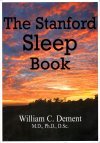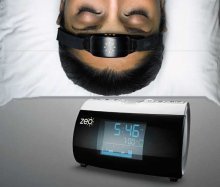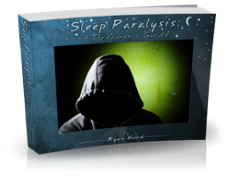
| Connect & Subscribe |
The Stanford Sleep Book: Table Of Contents
SSB Main | Preface | Introduction | Table Of Contents | Get A Copy
The following is the Table of Contents to the Stanford Sleep Book, the long-time textbook for Stanford Sleep and Dreams, currently in its 5th edition.
This Table of Contents is available to help you explore the contents of the Stanford Sleep Book, to hopefully aid you in determining if you'd like to read it yourself.
For more information on the Stanford Sleep Book, please visit this page.
If you are interested in getting a copy of the Stanford Sleep Book, please visit this page.
|
PREFACE |
1 |
|
PERSONAL INTRODUCTION FROM THE AUTHOR |
1 |
|
CHAPTER 1 Why Learn About Sleep: Read This Now!
|
1 |
|
CHAPTER 2 What Is This Thing Called Sleep?
|
13 |
|
CHAPTER 3 Introduction to the Relationship Between Quality of Sleep & Waking Function
|
46 |
|
CHAPTER 4 Sleep Debt, Sleep Tendency, and Sleep Homeostasis
|
51 |
|
CHAPTER 5 Alert Wakefulness From Inside Ourselves
|
77 |
|
CHAPTER 6 Sleep Tendency and Alertness Throughout the 24-Hour-Day
|
90 |
|
CHAPTER 7 Understanding the Subjective Nature of How We Feel
|
106 |
|
CHAPTER 8 Sleep and Everyday Life
|
127 |
|
CHAPTER 9 Sleep Debt: Consequences and Crises
|
150 |
|
CHAPTER 10 The Phenomenology of Dreaming and the Problem of Consciousness
|
179 |
|
CHAPTER 11 The Psychophysiology of Dreaming
|
201 |
|
CHAPTER 12 The Content of Dreams
|
216 |
|
CHAPTER 13 Sources, Meanings, and Purpose of Dreaming
|
246 |
|
CHAPTER 14 Lucid Dreaming: A Special Case
|
271 |
|
CHAPTER 15 Sleep Disorders: An Overview
|
280 |
|
CHAPTER 16 Insomnia
|
301 |
|
CHAPTER 17 Restless Legs Syndrome
|
326 |
|
CHAPTER 18 Obstructive Sleep Apnea
|
333 |
|
CHAPTER 19 Narcolepsy and REM Behavior Disorder
|
361 |
|
CHAPTER 20 Parasomnias
|
373 |
|
CHAPTER 21 Public Policy and Sleep Education
|
391 |
For more information on the Stanford Sleep Book, please visit this page.
If you are interested in getting a copy of the Stanford Sleep Book, please visit this page.
About This Site
Welcome! This site is continuously being created by students of Dr. William C. Dement's Sleep And Dreams course at Stanford University.
We made this site as a call to action for people all over the world to live healthier, happier, safer, and more productive lives by learning about their own sleep. We have faith that reading the information provided on this site will motivate you to be smart about your sleep deprivation and strategic about your alertness in order to live life to your fullest, most energetic potential.
In fact, we challenge you to do so! What do you say, are you up for the challenge?
Interviews With Sleep Specialists: Insights Into the Worlds of Sleep Medicine & Sleep Business
America's Most Dangerous Disorder: What Is Sleep Apnea Doing To Your Sleep?
Sleep Debt: How Much More Will You Achieve When You Reduce Yours?
The Stages Of Sleep: The Journey Through The Night
Delayed Sleep Phase: You Want To Sleep But You're Not Tired Yet
Paralyzed at Night: Is Sleep Paralysis Normal?
Sleep In Words: Smart, Strange, and Funny Quotes About Sleep
Sleep Disorders In Children: What's Keeping Your Child From A Full Night's Rest?
Attacks of Pavor Nocturnus (a.k.a. Sleep Terrors, Night Terrors, or Incubus Attacks)
The Stanford Sleep Book
Dr. Dement's pioneering textbook has been the core text for Sleep and Dreams since 1980, but it has just recently been made available to the wider public for the first time.
In it you'll find a more detailed account of the most important things you need to know about sleep, alertness, dreams, and sleep disorders. Studies, statistics, plus plenty of Dr. Dement's classic anecdotes painting the history of sleep medicine.
Preface | Intro | Contents | Get A Copy
More Sleep Resources
The Zeo
A revolution in personal sleep tracking, the Zeo is a wireless headband that transmits your brainwaves in realtime to a dock (pictured here) or your smartphone. The result? You can wake up and see exactly what stages of sleep you were in during the night! Unprecedented personalized sleep knowledge.
Sleep Paralysis: A Dreamer's Guide
Ever woken up paralyzed? A surprising number of us have, believe it or not. But few know the actual causes of this phenomenon, and fewer still how to exert control over it. Dream researcher and sleep paralysis expert Ryan Hurd shares breakthrough insights into how to do just that.
Important Disclaimer
Please Note:
The information found on this page and throughout this site is intended for general information purposes only. While it may prove useful and empowering, it is NOT intended as a substitute for the expertise and judgments of healthcare practitioners.
For more info, see our
Terms of Use.









